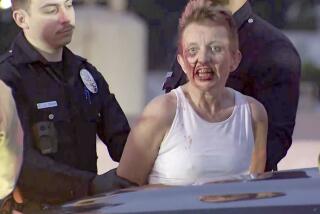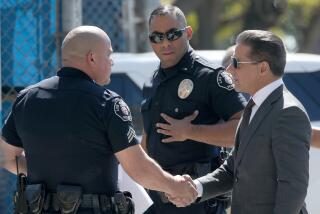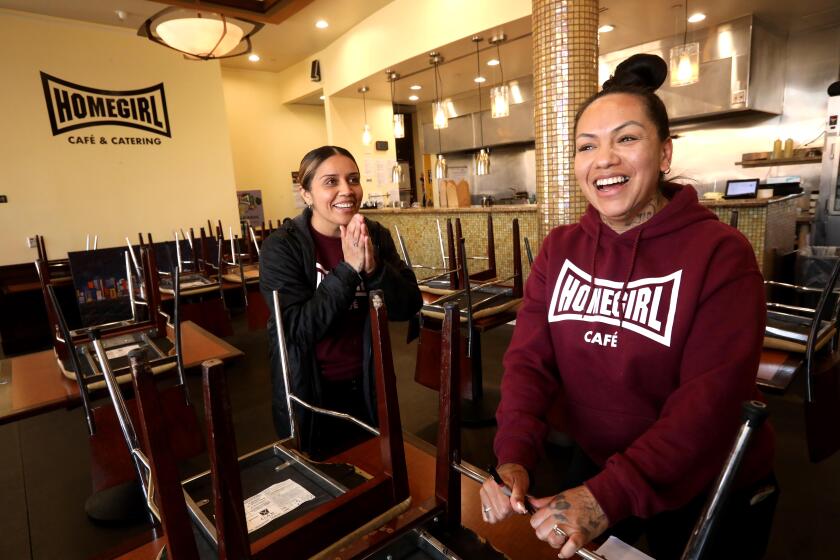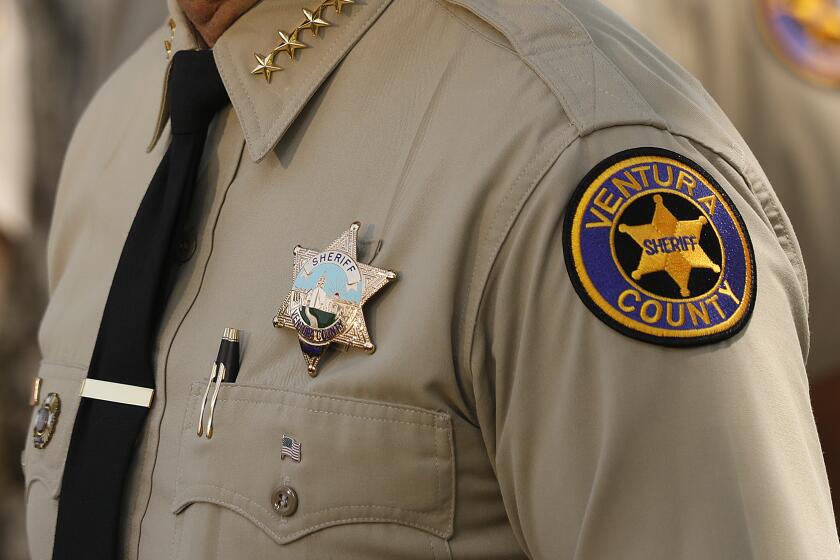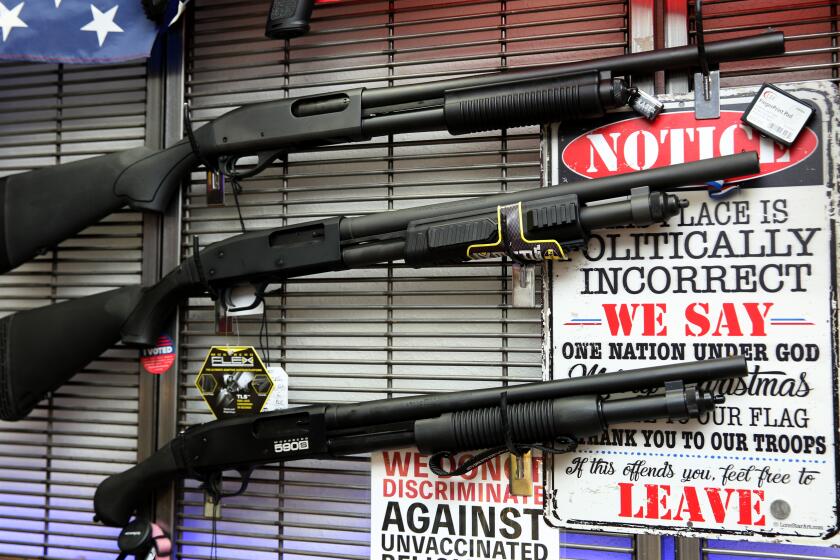Neighbors’ Values Clash Over Landfill Expansion Proposal
To Karen Jaye, the principal of Fernangeles Elementary School in Sun Valley, the landfill at the end of the block is a smelly, gritty source of traffic and debris, an affront to its predominantly poor neighbors and a potential health hazard.
To Doug Corcoran, who operates that landfill, it is the generator of clean electrical power for 10,000 homes -- methane produced by the waste is burned to generate electricity -- and a potential linchpin in the city’s recycling efforts.
Jaye is right, and so is Corcoran, and thus the debate over the future of the Bradley Landfill in the East San Fernando Valley community at the outer edge of Los Angeles has framed some of the bitterly conflicting values that inform politics in this liberal metropolis.
Here in the nation’s second-largest city, advocates for the poor and environmentalists both hold considerable sway, but their agendas sometimes are at odds. What’s more, others know that to advance their interests, it sometimes pays to feign allegiance with one of the powerful blocs. Thus, as the landfill debate illustrates, even within the blue-state politics of Los Angeles, values do clash.
No wonder, then, that a proposal to enlarge the landfill and add a recycling facility has managed to engage community organizers, the local Catholic church, environmentalists and big business -- some represented by lobbyists and often found in perplexing alliances.
“There’s been a lot of action,” said Tony Cardenas, the city councilman whose district includes the landfill. “There’s been a lot of rhetoric.”
Frankly, Cardenas adds with a sigh: “There’s been a lot of everything.”
The Bradley Landfill, operated by Waste Management, is not the most popular resident of Sun Valley. The little community at the northern edge of far-flung Los Angeles supplied the sand and gravel that built downtown and has long served as home to some of the city’s more burdensome enterprises -- landfills, quarries, power plants, junkyards and the like.
Bradley started as a quarry, but once that business petered out, its then-owners converted their hole into a dump and started filling it with trash. It has been a landfill since 1959, and the scores of trucks that serve it today have to climb a small hill to deposit their trash, which is collected from industrial and commercial sites across Los Angeles.
Jaye, for one, believes that 47 years of burying garbage at the Bradley Landfill is more than enough. She wants to shut it down. So does Charles Addcox, who lived near the dump for years and echoes the conviction that Sun Valley has taken enough of Los Angeles’ garbage.
“We’ve done our share,” Addcox said. “The children of this community should not have to keep breathing this.”
That reference to the quality of Sun Valley’s air runs throughout opposition to the landfill. At Fernangeles, a locked cabinet holds inhalers for the most seriously ailing of the 92 students diagnosed with asthma.
The number of students with asthma is not unusually high given the size of the student body -- more than 1,100 boys and girls attend the school -- but Jaye worries that their conditions are exacerbated by the landfill’s proximity and by the swarms of trucks that serve it.
On warm mornings, the odor from the landfill drifts across the schoolyard. Students and faculty wince.
“I don’t call it a landfill,” Jaye says, pointing her chin in the general direction of Bradley. “It’s a dump to me.”
But as much as Jaye, Addcox and their neighbors would like it, shutting down is not what the operators of the Bradley Landfill have in mind.
Rather than closing it, as has been done with some other Los Angeles landfills, they have proposed extending its life through early next year and in the interim piling up garbage so high that the dump would grow from a small hill into a significantly larger one, capping out 43 feet higher than the 100-foot mound already there.
After that work was complete, the area just south of the dirt-covered mound would be converted into a sorting facility for Los Angeles’ recyclables and trash, ending the site’s life as a dump but increasing truck traffic through the area. The sorting building -- in the argot of the landfill business, the structure is known as a transfer station and materials recovery facility -- would sit in a low divot off San Fernando Road, shielded by trees and foliage and equipped with dust- and odor-control systems. It would, operators and critics agree, be far less intrusive than the dump.
Through an assertive public outreach campaign that has featured dozens of meetings -- in Spanish as well as English -- and through elaborate explanatory material, Waste Management has touted the environmental benefits of that center and of the care it has taken to design a building that will not offend neighbors. No stranger to political rhetoric, Waste Management has taken in recent community mailings to referring to the transfer station as the Sun Valley Recycling Park.
Waste Management’s environmental emphasis has impressed some residents.
“Of all the reasons to support Waste Management’s plans, the way they protect the environment is most important to me,” resident Leonard Royer wrote to the city in January, specifically citing the recycling plans.
“It’s going to be beautiful,” Corcoran said of the transfer station, summoning an appreciation that only a landfill operator can have for a sorting building. “If we can just get to it, people will really appreciate it.”
Getting to it is the question, though, and the debate over the Bradley Landfill touches the sensitive topic of class as well. The landfill’s neighbors are mostly lower-income, and they view the plans as being suspiciously like a well-off city’s dumping its troubles on its least-affluent residents -- and doing so for more than a generation.
Those same critics complain that Waste Management’s attempt to take an environmental high ground is the worst sort of appropriation: a garbage hauler suddenly claiming allegiance to the green movement.
All of that has immense implications for Sun Valley but also larger ones for Los Angeles as it grapples with how best to serve its poor residents and still find places to recycle and bury its trash. One LA, a community organizing group that tackles issues of environmental justice, has helped galvanize opposition to the Waste Management plan.
“These are people without a voice,” Father Richard Zanotti, pastor at Our Lady of the Holy Rosary Catholic Church, said of his parishioners, the dump’s neighbors. “They have done their part.”
Jaye, the Fernangeles principal, agrees. “I don’t think this situation would occur in Beverly Hills or Woodland Hills,” she said. “I don’t know why the people of this area should be put at a disadvantage.”
Not all neighbors are so convinced that the transfer station -- or even the landfill expansion -- would be terrible. “It would be nice not to have it [the landfill] there, but it’s there,” said Jon Eshbach, president of the Sun Valley Area Neighborhood Council. But even though he acknowledges the reality of the landfill, he questions the city’s commitment to protecting a poor neighborhood.
To Eshbach, the issue is less whether the transfer station should be built -- he says he has no problem with that -- but rather what the city would do to compensate Sun Valley for being willing to take on the additional truck traffic that comes with it. “We want our fair share of services,” he said.
For the city’s political leadership, such clashes of interests pose the tough challenge of choosing.
Mayor Antonio Villaraigosa, elected last year with the strong support of environmentalists, promised during the campaign to oppose the landfill expansion. He remains committed in that opposition, an aide said earlier this month.
He’s more equivocal about the transfer station but harbors serious concerns about it, the aide, Joe Ramallo, said.
Councilman Cardenas has heard the complaints from Sun Valley too, but he’s opting for an even less definitive position. Cardenas grew up in Pacoima, a small community not unlike Sun Valley.
He knows the dust and highway grit of an industrial area, and he knows that the poor suffer more than their share of that. But he also cites the jobs that the landfill creates and the benefits that the recycling facility might offer.
Cardenas stresses that his job is to judge both sides fairly in the Bradley debate, and he’s acutely conscious of the politics of the issue.
Given all that, Cardenas is taking the measure of the debate -- and taking his time.
“I’m absorbing, absorbing, absorbing,” he insisted. “I’m thinking, thinking, thinking.”
More to Read
Start your day right
Sign up for Essential California for news, features and recommendations from the L.A. Times and beyond in your inbox six days a week.
You may occasionally receive promotional content from the Los Angeles Times.
